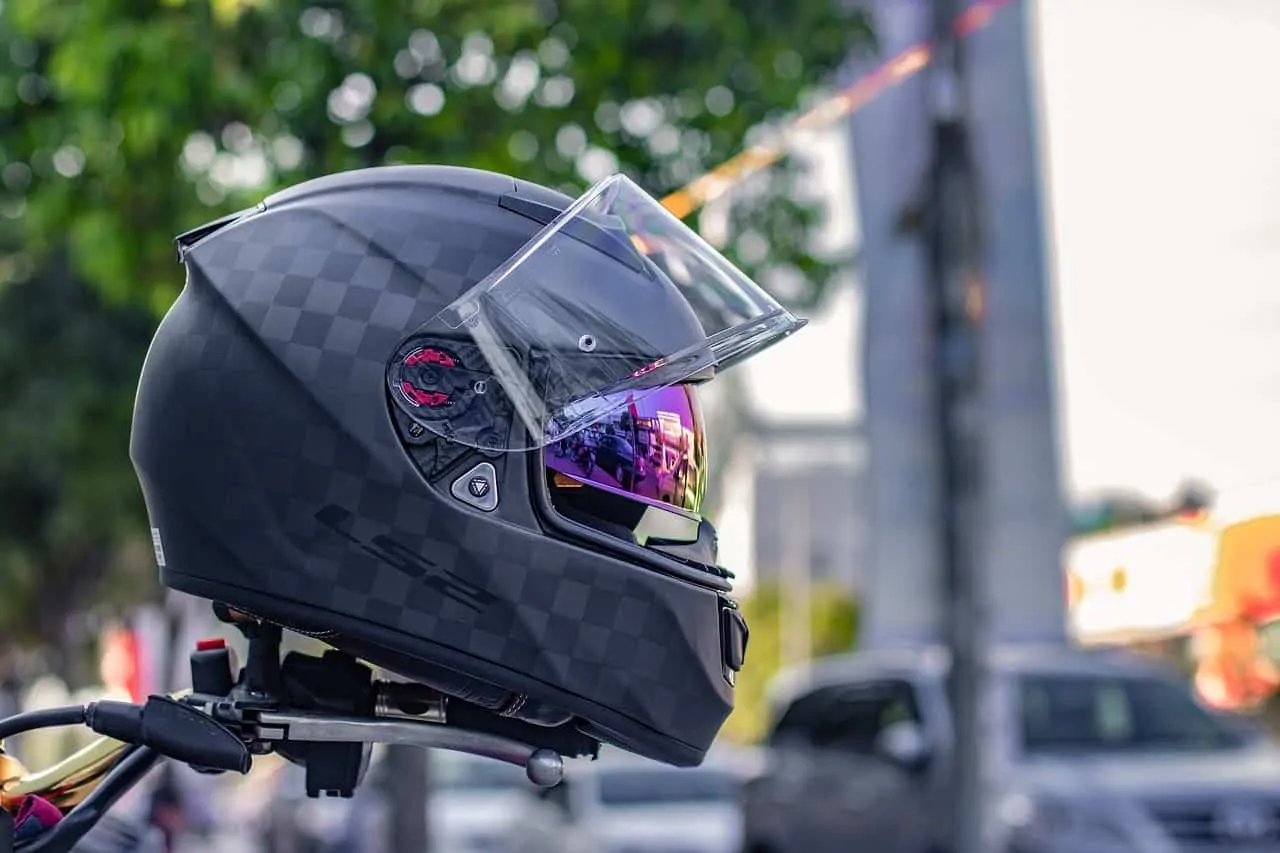A motorcycle helmet is a very important protective gear for motorcycle riders as it protects the most vulnerable part of the human body – the head. It limits the severity of injuries and protects the riders since motorcycles are very open vehicles that provide little to no protection.
A motorcycle helmet is only effective if it comes in the correct size and fit. A motorcycle should fit your head snugly for it to be effective in cushioning your skull in case of an accident. It should neither be too loose nor too fit. The best way to get a perfectly sized helmet is to visit a physical store. When shopping online, make sure to follow the measurement charts of the shops you intend to purchase from.
There are more tips and tricks that you can apply so that you can get the perfect fit for your head. You should also factor in the presence of different head shapes so not every motorcycle helmet in the correct size range is guaranteed to suit you.
How To Get The Perfect Fit
This section will discuss the steps for you to get the motorcycle helmet that will perfectly fit you. There are a couple of things you should consider before placing your order for a motorcycle helmet.
Measure Motorcycle Helmet
This is a no-brainer step. This is the primary step you should do to get a motorcycle helmet that actually fits your head. You will base the helmet size on your hat size.

Take a tape measure and wrap it around the biggest or most bulbous part of your head. This is usually located just above the ears and about half an inch above your eyebrows. The measurement will be more accurate if you get someone else to do the measuring for you. This measurement is the head circumference which you can check in the chart below so that you can get your helmet size.
Keep in mind that the sizing chart below is a generic one. Some companies have specific sizing charts for their products so make sure to consult that, too.
| SIZE | HAT SIZE | HEAD CIRCUMFERENCE |
| XS | 6 5/8 – 6 3/34 | 20.87” – 21.26” (53 – 54 cm) |
| Small | 6 7/8 – 7 | 21.65” – 22.05” (55-56 cm) |
| Medium | 7 1/8 – 7 ¼ | 22.44” – 22.83” (57-58 cm) |
| Large | 7 3/8 – 7 ½ | 23.23” – 23.62” (59-60 cm) |
| X-Large | 7 5/8 – 7 ¾ | 24.02” – 24.41” (61-62 cm) |
| 2X-Large | 7 7/8 – 8 | 24.8” – 25.2” (63-64 cm) |
| 3X-Large | 8 1/8 – 8 ¼ | 25.6” – 26” (65-66 cm) |
| 4X-Large | 8 3/8 – 8 ½ | 26.4” – 26.8” (67-68 cm) |
| 5X-Large | 8 5/8 – 8 ¾ | 27” – 27.5” (69-70 cm) |
Shape Of The Helmet
As aforementioned, there is no universal head shape. That means that not every helmet will perfectly fit your head, even if it happens to be in the right size.
There are three main head shapes: long oval, intermediate oval, and round oval. Motorcycle helmet manufacturers all over the globe have taken these shapes into consideration and there are so many different companies that create different helmets to cater to different helmet sizes.
-
Long Oval
This means that the shape of the head is longer in the front-to-back area compared to the side-to-side area. Front-to-back covers your forehead to the back of your skull. Side-to-side area refers to the length of one ear to the other.
-
Intermediate Oval
This is almost exactly like long oval except that the front-to-back area is only slightly longer compared to the length of the side-to-side area. This is actually considered to be the most common head shape among motorcycle riders. As such, there are so many motorcycle helmets that are manufactured in this shape.
-
Round Oval
Round oval refers to the type of head shape wherein the side-to-side length is almost completely identical to the front-to-back shape.
Types Of Motorcycle Helmets
There are different types of helmets to cater to different riding habits. It also depends on your preferences as a rider. You can opt for full-face protection if you want that extra security, or try something of lighter construction if you don’t wish to be distracted by the bulk.
There are five main types of motorcycle helmets to choose from full-face helmets, modular helmets, ADV dual sports helmets, open face helmets, and half shell helmets. These types are formulated to cater to your driving habits and preferences as a motorcycle rider.

How Snug Should A Motorcycle Helmet Be?
A motorcycle helmet is most effective when it fits snugly. You should feel a little bit of tension as you put it on. It shouldn’t slide on smoothly, nor should it be that easy to remove. The helmet shell should encase your head. The liners, usually made of foam, should make the helmet feel snug, especially along with your temples and cheeks. The strap should also sit flush against your chin with no wiggle room.
A motorcycle that is too tight can cause you migraines. The excessive tension on your skull is bound to cause pains that will just distract you as you drive.
Conversely, a helmet that is too loose will be ineffective in cushioning your skull in case of an accident. A loose helmet has the chance to roll off of your head upon impact which will leave the area exposed. The loose helmet can also move around while you are driving and that is such a major distraction for you.
Fit And Positioning
Take a finger and then insert it between your head and the helmet. It shouldn’t freely go in because that means that the helmet is too loose. If that happens, try going down one size. It should be a tight squeeze for your finger.
If a size lower is too small for you, another option you can try is to add more padding. You can also replace the inner liners with something thicker to make the helmet fit more snugly.
The helmet should also rest comfortably above your eyebrows. You wouldn’t want a helmet that slips over your eyes and impedes your vision as you drive. Check your peripheral vision and make sure that it isn’t blocked by the helmet. Your peripheral vision is another important element while driving.
